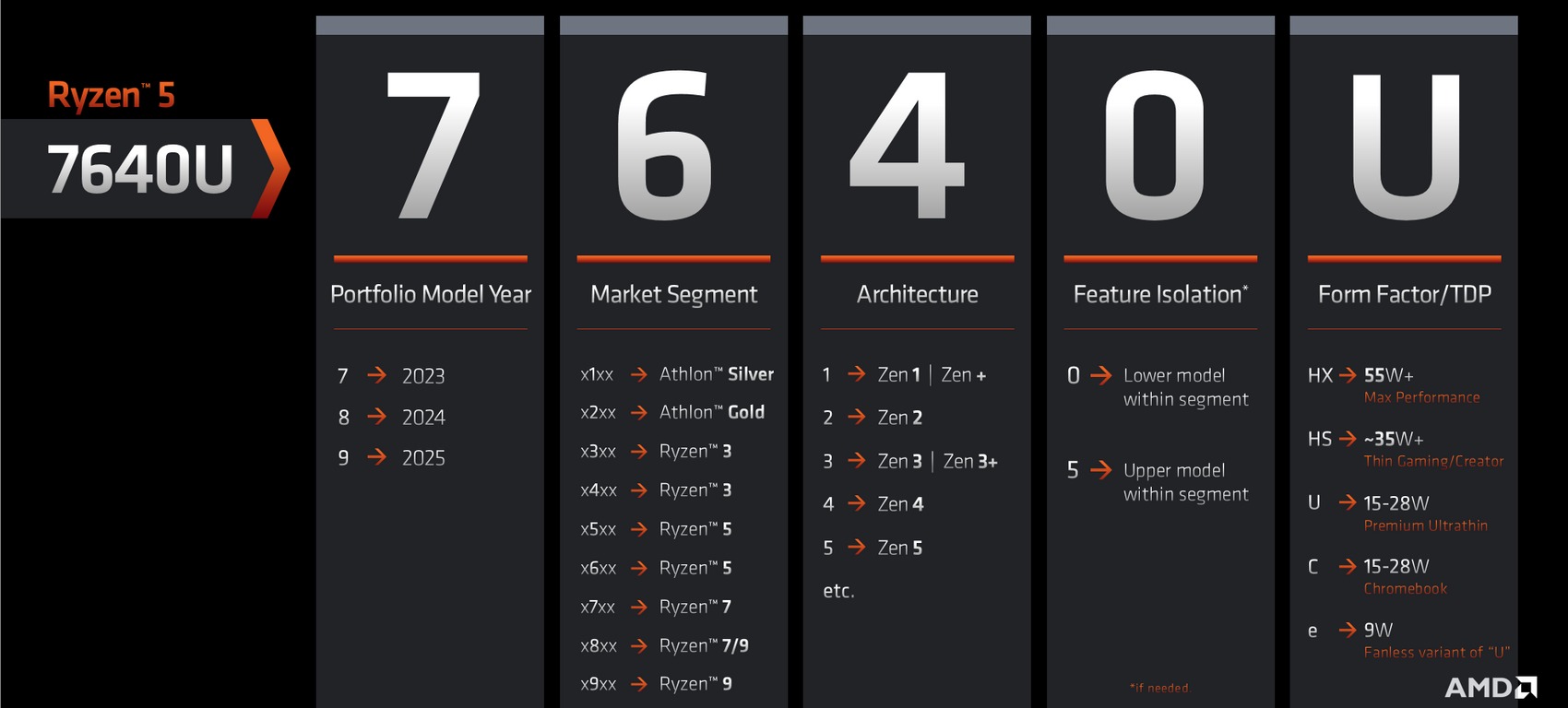What you need to know
- AMD will introduce a new naming system for its mobile processors in 2023.
- The company explained that its current naming convention “simply could not accommodate the influx of new SOCs in new categories [it’s] developing.”
- The new system has each character of a name relay information, such as portfolio year, segment, and architecture.
AMD continues to roll out new processors at an impressive clip. The company has so many chips on the way that it had to devise a new naming structure to accommodate. The chipmaker just announced a new naming scheme for its processors that will take effect in 2023.
The number of AMD chips on the way wasn’t the only factor considered when the company decided to change its naming conventions. AMD wants customers to be able to glean information from the various characters that make up a name. Each figure shares details about a chip, such as portfolio year, segment, and architecture. Names will also inform users about feature isolation and the form factor and TDP of a chip.
The new naming scheme will work as a “decoder ring” to customers, according to AMD. A community post outlines the finer details:
- Portfolio Year: Gives you a sense of what model year the processor lives in. Are we actively selling it as a current-gen product in that year?
- Segment: Helps us communicate “at-a-glance” performance to customers browsing in the store. For example, Ryzen 9 are always our fastest and most feature-rich processors. This helps customers cross-shop at a glance, and is the most common way customers compare CPUs.
- Architecture: A nod to our enthusiast customers, we wanted to make sure you could see what version of “Zen” lives inside the chip. It’s important!
- Feature Isolation: A concession to architectures like “Zen 3” versus “Zen 3+,” which cannot be fully articulated in the architecture digit alone. Flipping this digit between 0 or 5 ensures that two different architectures don’t end up in the same Ryzen 70xx family.
- Form Factor/TDP: AMD’s innovation and growth in the mobile space is especially evident here, where you can see we’re servicing multiple design categories across Windows and Chromebook.

“This new numbering system is foundational to how we will be naming and numbering our mobile processors for years to come, and we’ve already smoke-tested it against a 5-year time horizon,” said AMD. “We hope this new system will give everyone a better sense of what’s inside our processors, and we hope that it shows we’ve been listening to your conversations around the importance of model numbering.”




